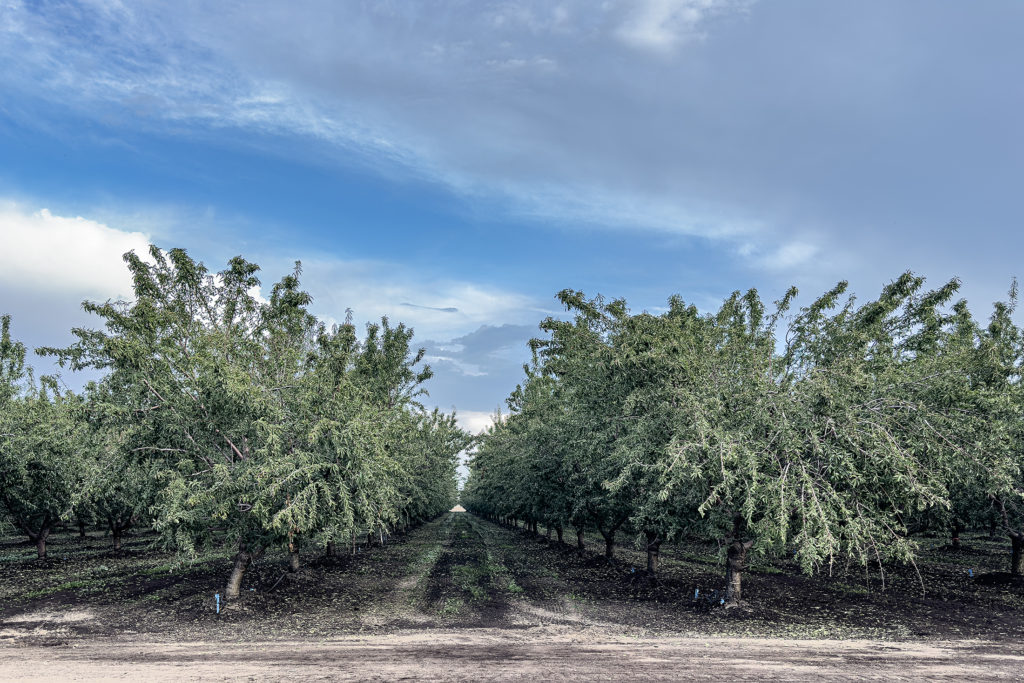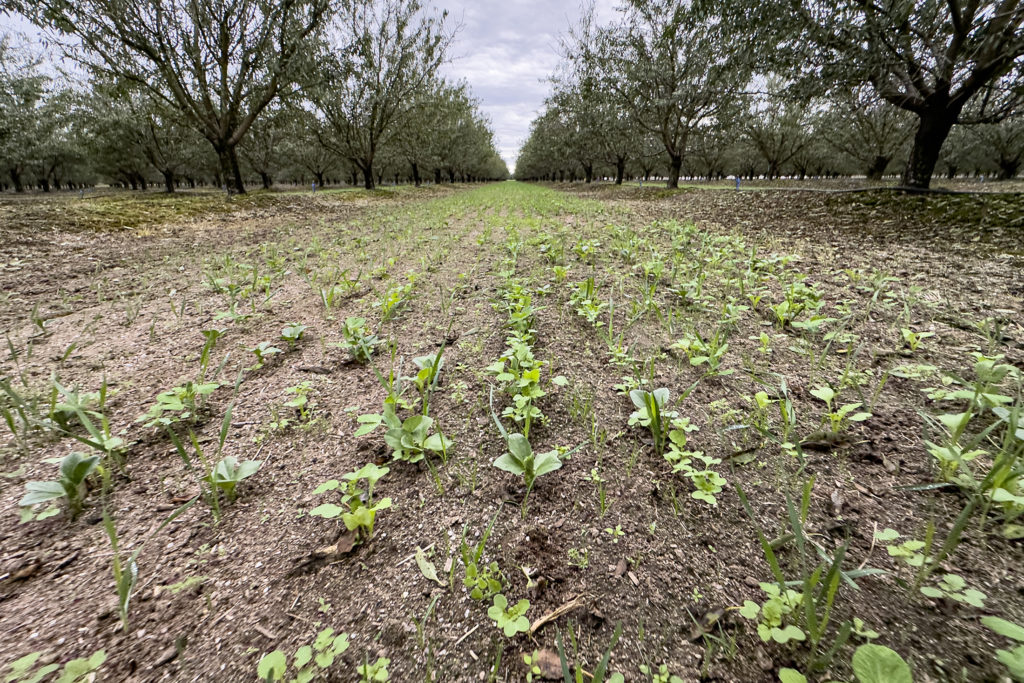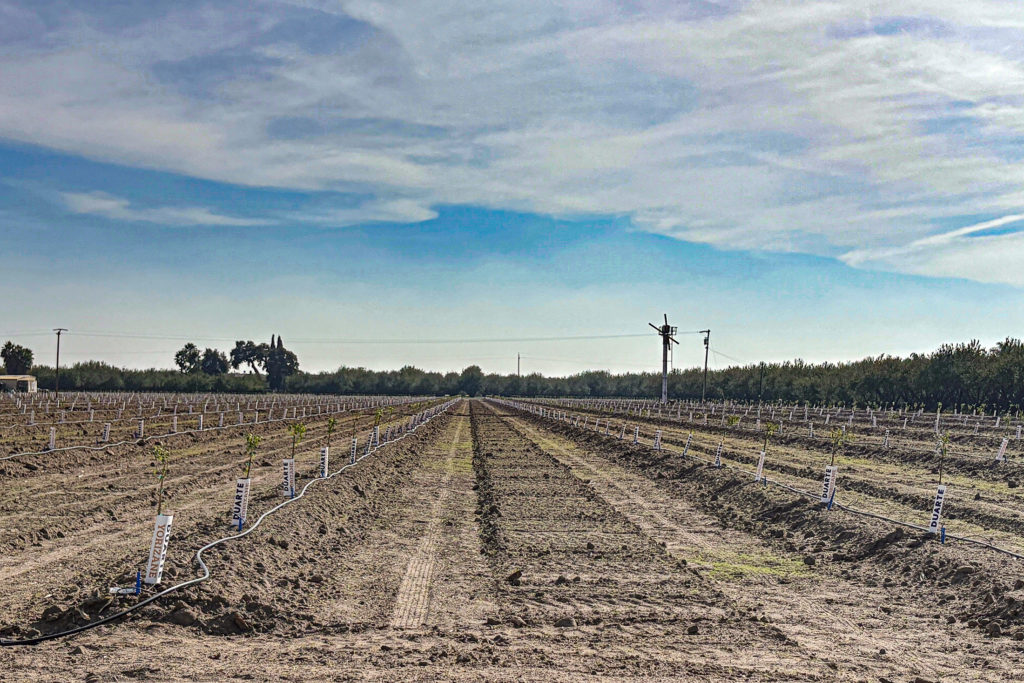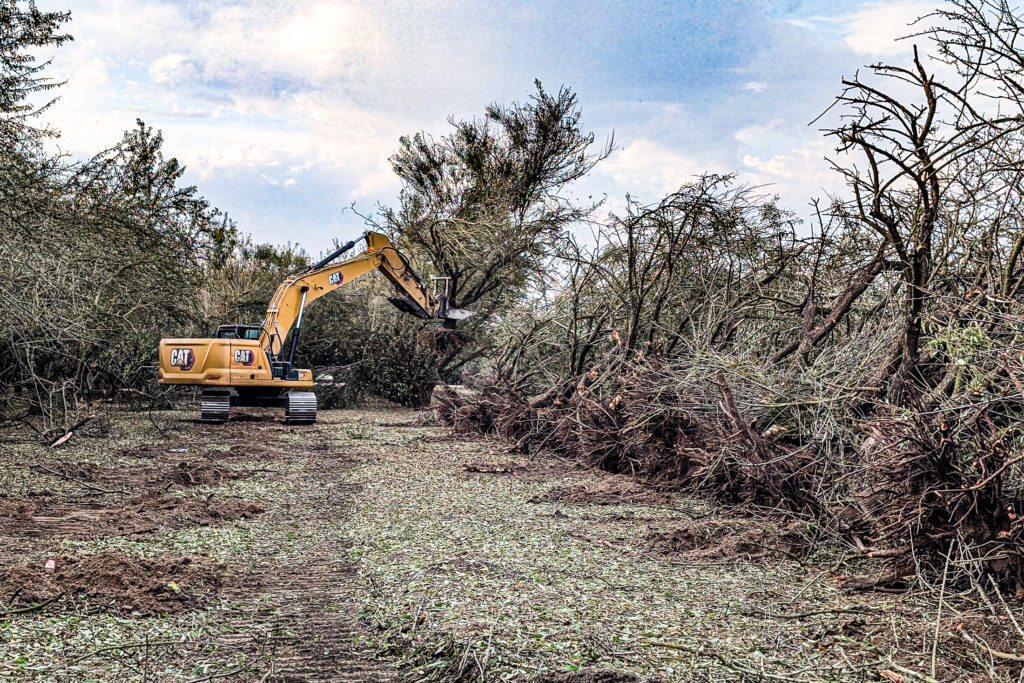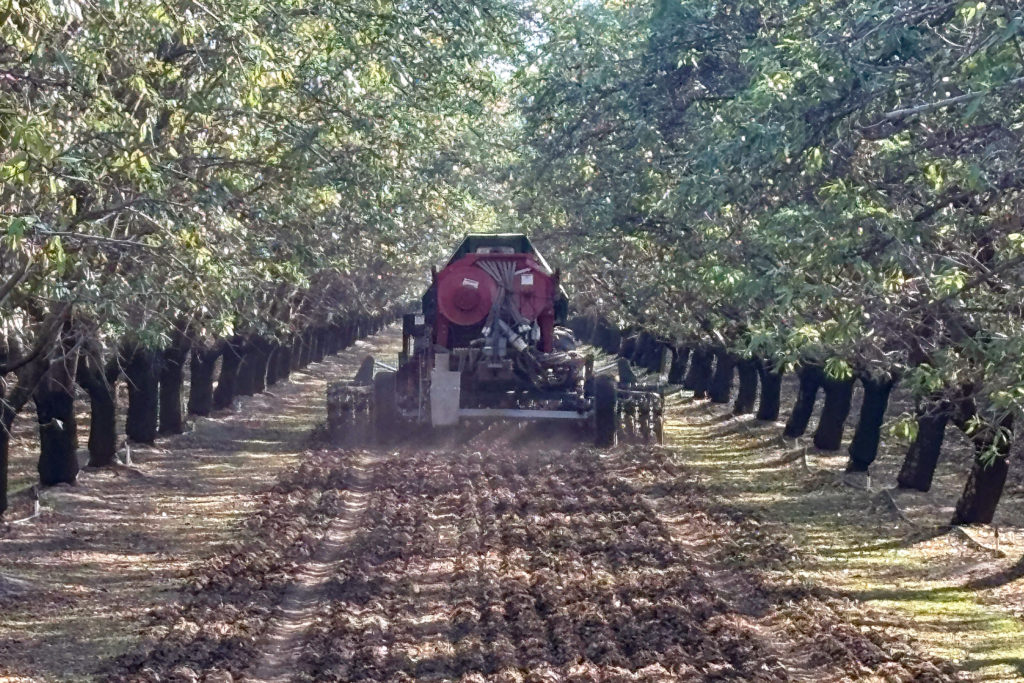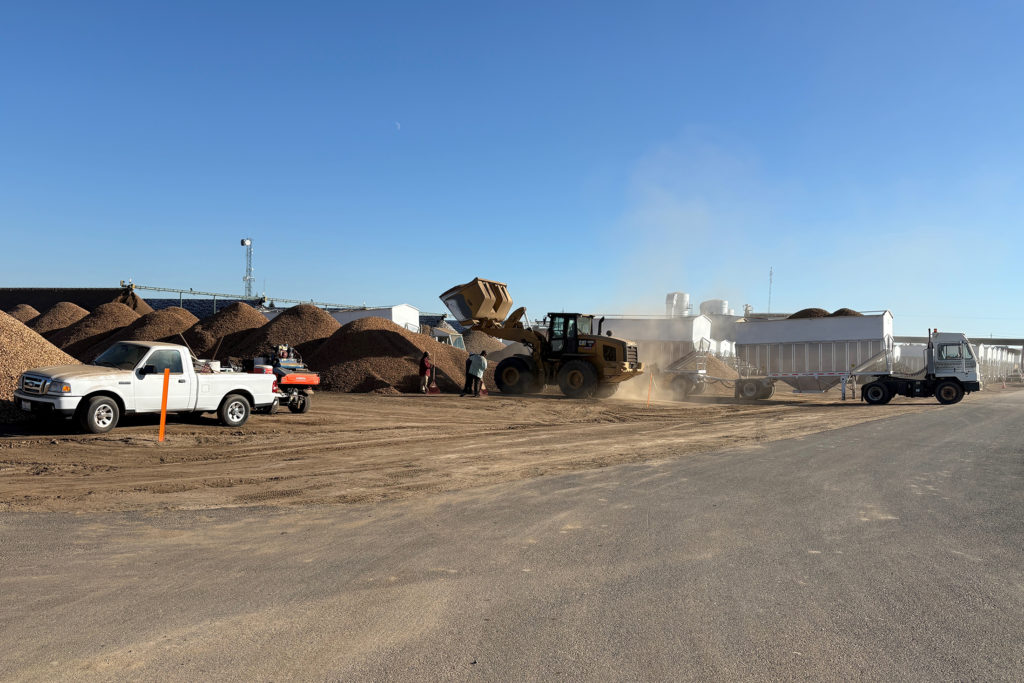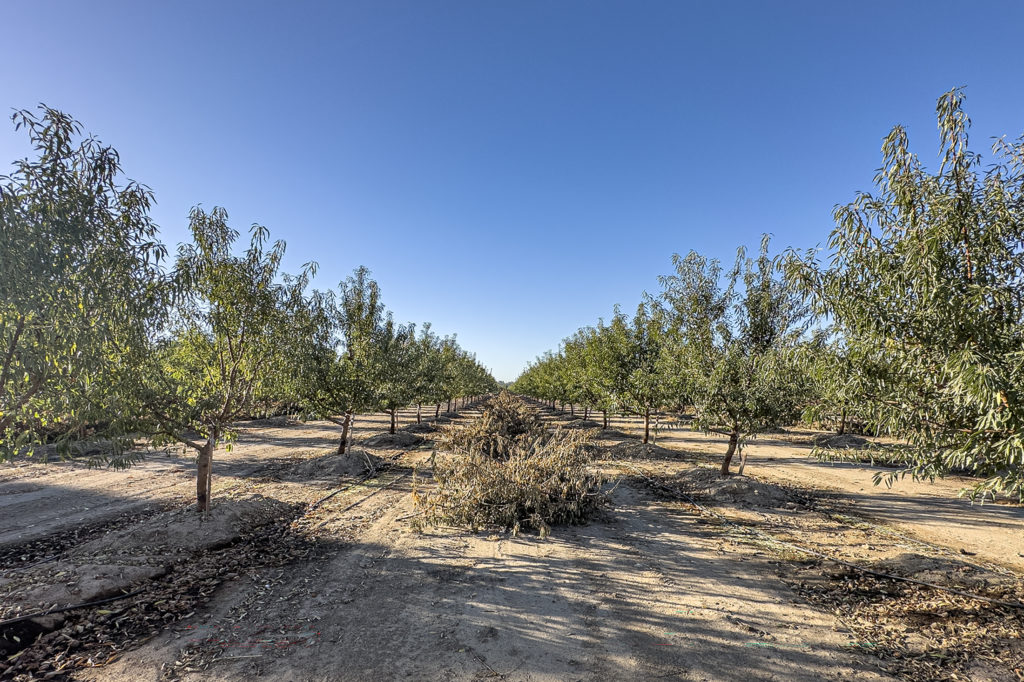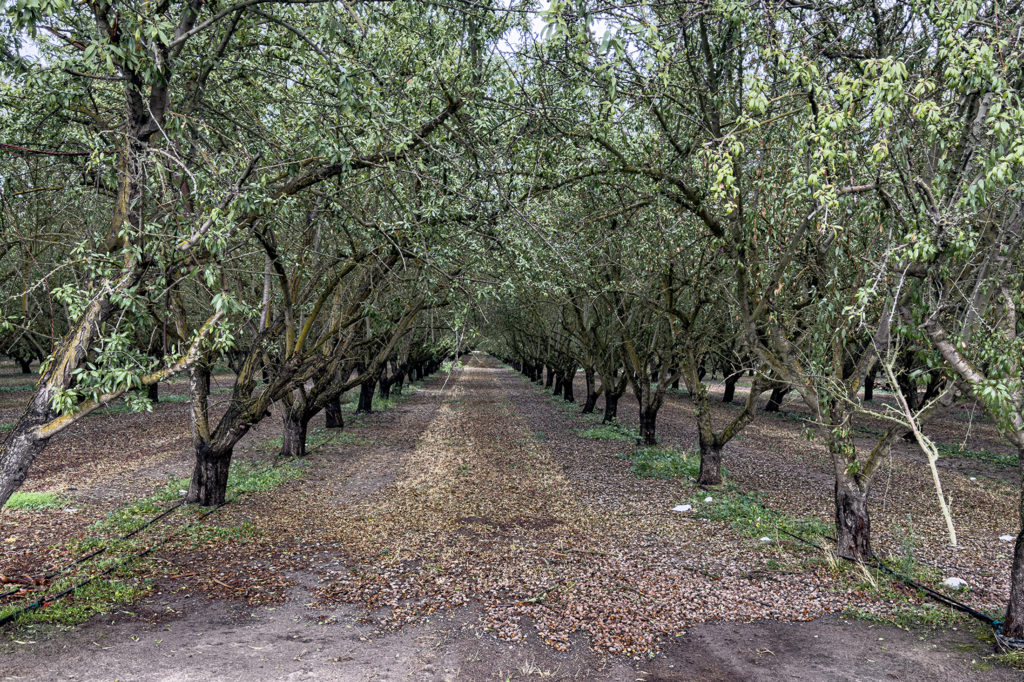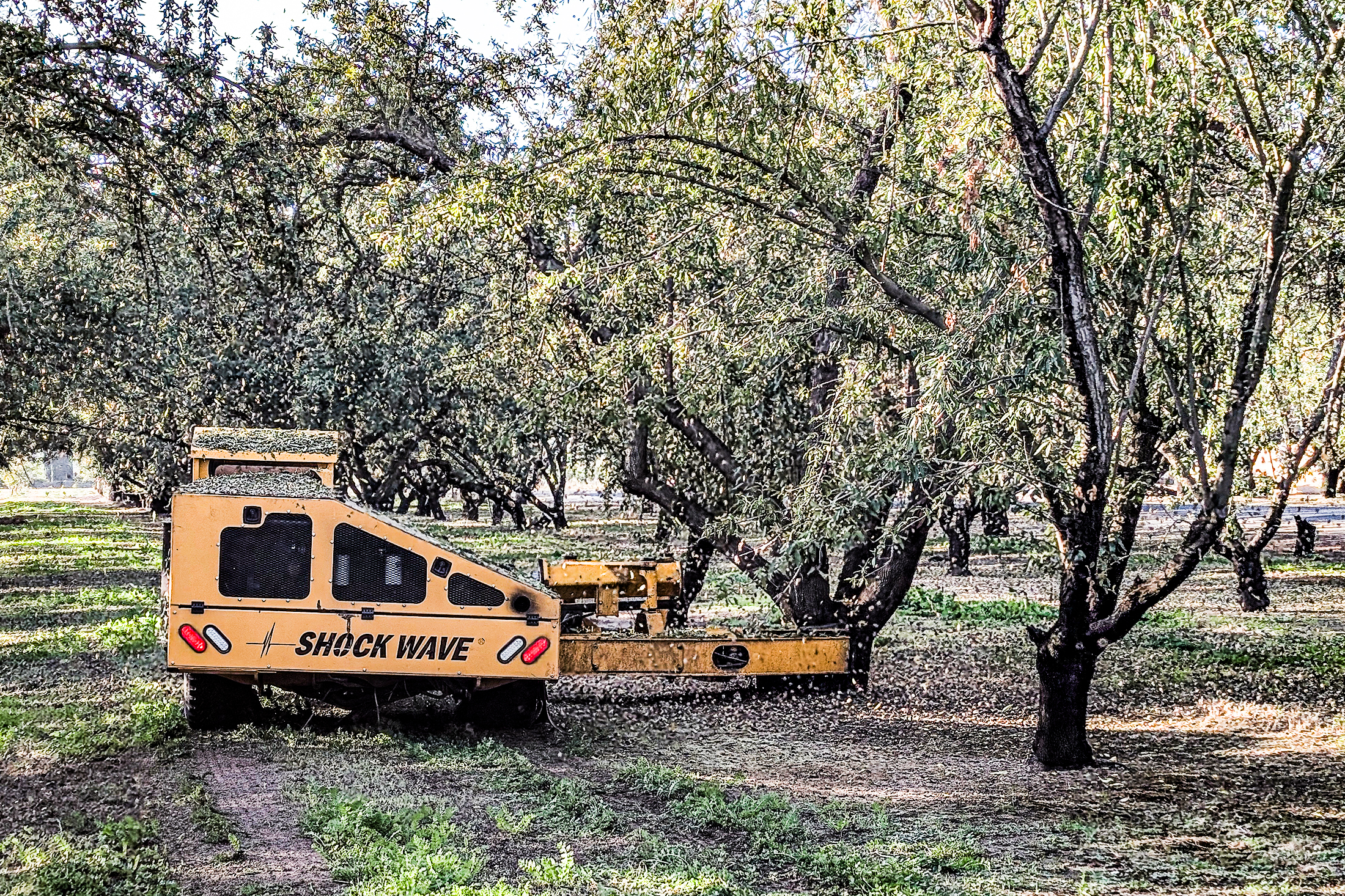
This is the final report of the 2025 crop year, covering the conditions and observations made between Monday, September 30, and Sunday, November 2, 2025. The next report will be posted on or around Monday, February 2, 2026, prior to the start of the 2026 bloom.
Adverse weather conditions played a significant role in orchard operations during October as growers worked to complete the 2025 harvest. Following the three rain events that reduced the pace of harvest in September, a fairly strong Pacific weather system delivered from 0.25 to as much as 2.0 inches of rain across the central valley at mid-month.
Daily maximum temperatures varied widely, reaching their highest levels relatively early in the period, peaking at just over 90 degrees in all areas of the valley. Temperatures then dropped into the low to mid 70’s during the periodic rain events and rose to above seasonal norms in the mid-80’s during the final days of the month.
Growers worked to complete the 2025 harvest during the final days of the period struggling to bring in the last of the late harvesting Monterey, Fritz and delayed examples of Butte, Padre, and several other pollinators.
Growers worked long hours to get their crops out of the orchards prior to the arrival of the mid-month storm system, with many opting to harvest crops that were not quite ready but were brought in to avoid adverse impacts from the rain. However, the excessive moisture levels of the immature or green crops inhibit the hulling and shelling process, reducing flow rates and making separation of the hull more difficult. In many cases, these high-moisture crops require special handling prior to hulling and shelling, as excessive moisture eliminates the possibility of safely stockpiling for later processing. Some have opted to spread in-hull almonds on open ground to dry. However, up to the final days of the period, weather conditions have not supported adequate drying.
For those with crops remaining to be picked up, shorter days and heavy morning dew have provided little opportunity for drying in the orchard. Observers are reporting cases where crops in orchards receiving the most rain have been lost.
Huller/sheller operators have had their share of challenges, as well. Once separated, the high moisture hulls are subject to mold and spontaneous combustion, requiring hullers to quickly dispose of the hulls or salvage as much as possible. After hulling and shelling, the immature or “green” kernels also makes drying for safe storage more challenging, requiring more time to dry than nuts that are simply wet from the rain.
As noted in our last report, growers who have completed their harvest quickly moved into post-harvest operations. Post-harvest irrigations to replenish soil moisture levels have been required, despite the moisture received from the rain. For those receiving their water from local irrigation districts, deliveries from Sierra Nevada reservoirs ended during the final weeks of the period. Applications of soil amendments and fertilizers have also taken precedence, followed quickly by planting of winter cover crops.
Growers with young plantings requiring training have begun pruning their trees, selecting primary branches to develop the structure needed to support crop loads in the subsequent years. Therapeutic pruning, the removal of broken and low hanging branches eliminated for safety reasons will continue over the coming weeks. The pruned branches will be shredded and allowed to break down on the orchard floor. Those removing older, low-producing orchards have also began pulling the trees, which will be ground into wood chips and incorporated into the soil.
Observers are reporting that several smaller huller/sheller operations have completed their operations for the year. Larger operations with previously harvested stockpiled product turned to their stockpiles as the flow of crop slowed during and following the rain events. After the flow of crops from the orchards has been completed, these operations will finish their stockpiles, with some running well into December.
Over the coming winter, growers will prepare their orchards for the 2026 bloom. Vegetation management and orchard sanitation, the removal and destruction of mummy nuts harboring navel orangeworm will all be complete prior to the start of the bloom.
By Mel Machado
Photo Credits: KC Clendenin, Austin Jackson, Justin Elam and Mel Machado

